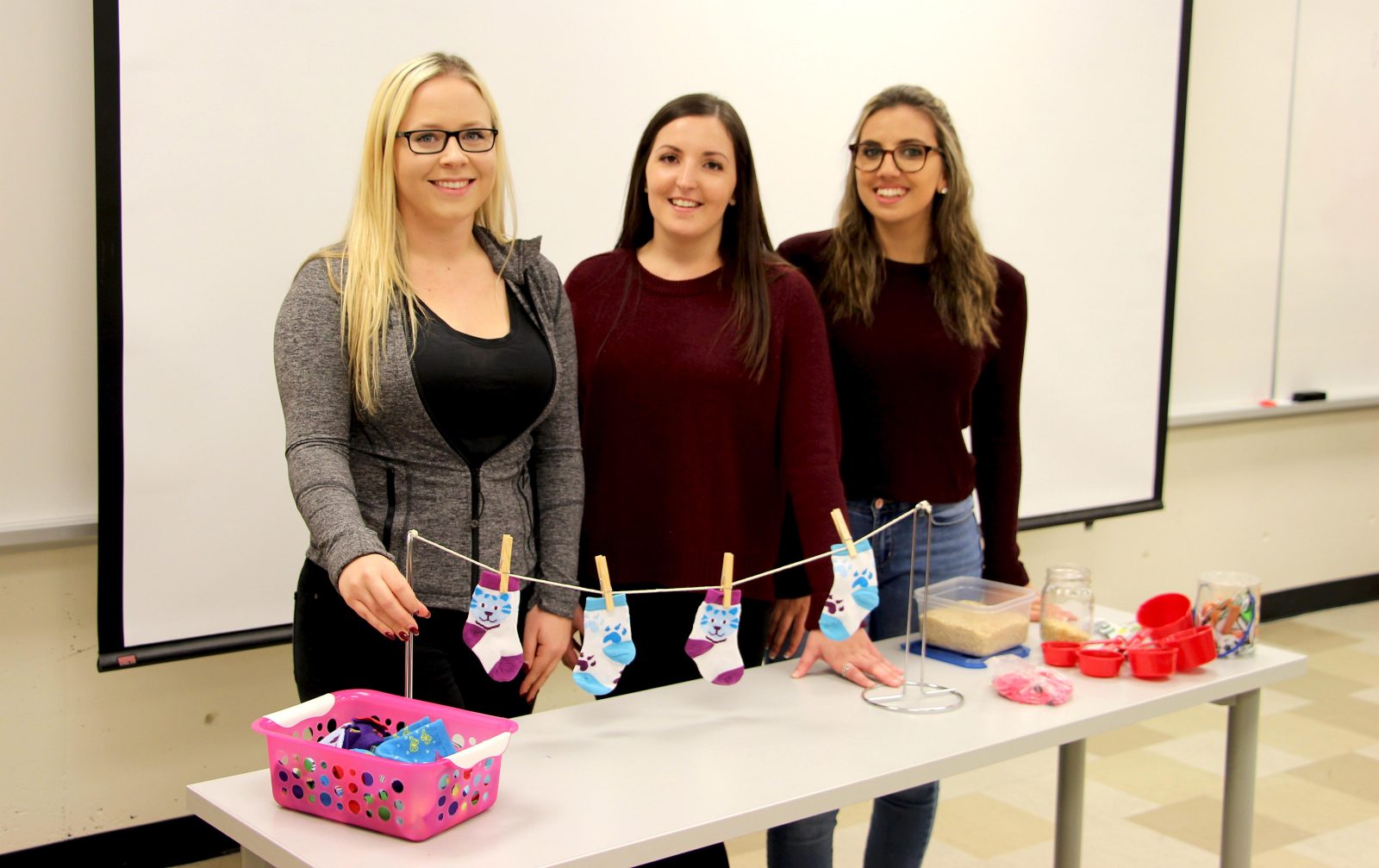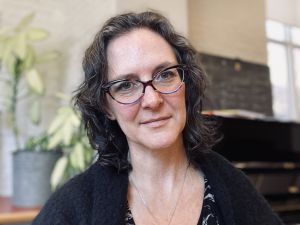 Students Erin McGrail,
Christina D’Amato and
Megan Da Silva Antunes helped to create a math kit for young learners as part of a third-year Mathematics course.
Students Erin McGrail,
Christina D’Amato and
Megan Da Silva Antunes helped to create a math kit for young learners as part of a third-year Mathematics course. Brock students are working to make math equal fun by adding a dash of creativity.
Students in a third-year math course, Mathematics at the Junior/Intermediate/Senior Level, have been working to create kits to help make math more accessible to young learners.
Coinciding with National STEM Day, the first of three presentations related to the kits took place Nov. 8 and offered faculty, students and Let’s Talk Science Outreach at Brock volunteers a sneak peek into the hands-on, interactive math-based activities.
The project, a new addition to the long-running Math 3P91 course, provides the class of future math educators an opportunity to apply the theoretical concepts they learn in class.
The idea for this experiential component emerged last year when Dan Lonergan, Experiential Education Co-ordinator in the Faculty of Mathematics and Science, and Anna Hudlin, Let’s Talk Science Outreach at Brock Site Co-ordinator, discussed a potential partnership.
In 2016, Brock became a new site for Let’s Talk Science, a national organization that offers science education and programs for all ages from preschool to high school using ready-made science, technology, engineering and math-related kits.
Recognizing the need for more math-based kits, Hudlin approached Lonergan about creating the experiential opportunity.
Following feedback and final tweaks, the students’ work may become part of available Let’s Talk Science kits used in classrooms by volunteers at Brock and beyond.
Each kit contains a workbook and guide for the classroom facilitator, as well as the materials needed for each workshop. Kits were created for a variety of math topics and were each geared toward specific grades.
For example, one kit is all about exploring the mathematical concepts of comparing, sorting and pattern recognition.
The kit uses common household activities to help young learners connect the concepts to life outside the classroom.
Participants rotate through a series of activity stations that show the concepts at work while doing household chores such as sorting laundry, sewing, baking, grocery shopping and counting money.









